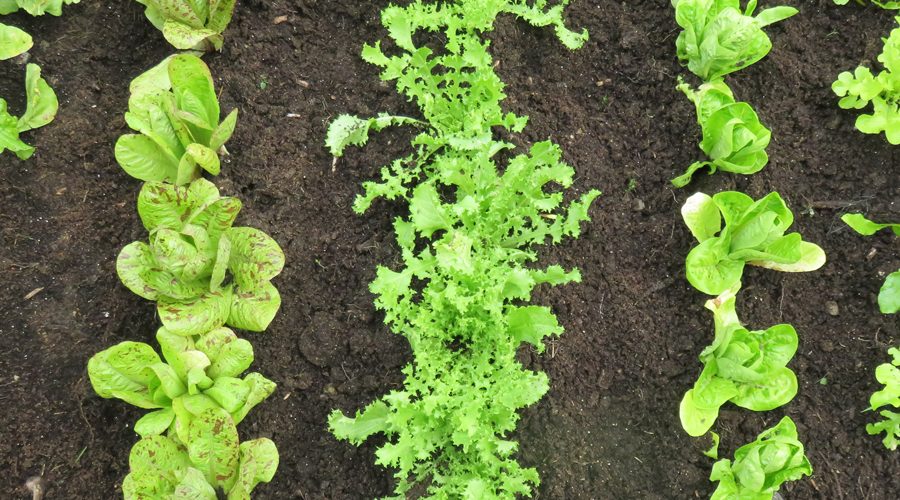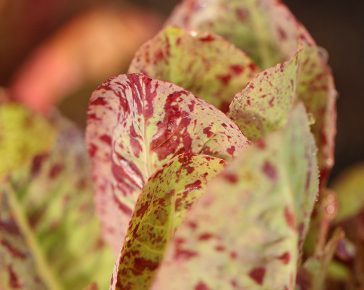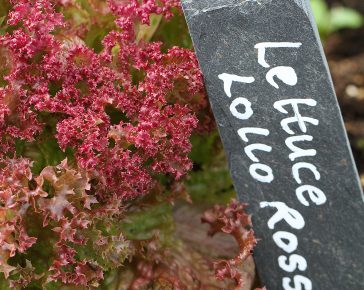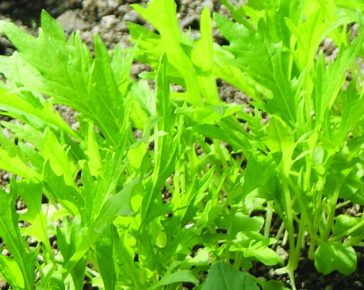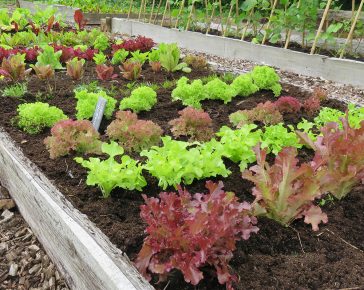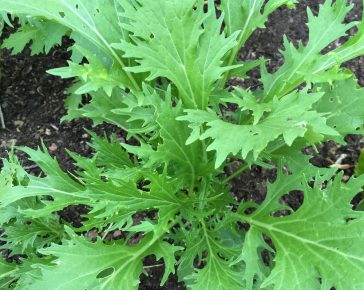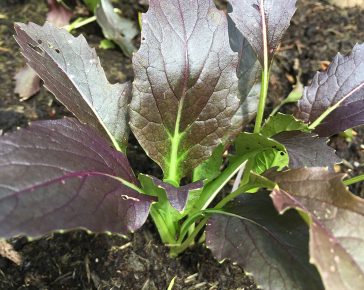Salads and lettuces are a great starting place for novice gardeners, and they are straightforward to grow. Here are a few pointers that will help you to keep plants healthy and productive for several months over the summer.
Plant salad leaves in partial shade
This is such a good idea for spring and summer planted salads leaves and lettuces. If you can plant them in a bed that gets dappled shade, or shade for a small chunk of the day, then it will really help to prevent the plants from bolting (producing flowers) early. If growing in pots, you can move pots easily to a place that gets a little more shade. If growing in beds that do not have shade, try growing them between other taller plants, like at the base of climbing beans or in between tall sweetcorn plants.
Keep the soil cool & water regularly
This is also done to keep the plants from bolting early. By watering regularly during dry spells (first thing in the morning is best) you will help to keep the soil a little cooler and the plants will be less likely to bolt. If you can, add a mulch soon after planting as this keeps the soil at root level well protected from the sun and will help retain moisture too.
Remove outer leaves regularly, leaving the heart to keep growing
You’ll get more from your salad plants, over a longer time, if you harvest regularly. Pick the outer leaves by cutting at the base, leaving the centre of the plant intact to keep growing. This is particularly true of loose leaf lettuce varieties (‘Salad Bowl’ and ‘Lollo Biondi/Rossi’) whereas you can choose to leave hearting varieties (like ‘Little Gem’ & ‘Freckles’) to grow to full maturity before harvesting whole.
Protect from slugs & snails, and aphids
These are the main pests to watch out for when it comes to lettuces and leaves. Slugs and Snails will be most attracted to the younger plants when they have been newly planted, as well as older, rotting leaves (which is another good reason to pick leaves regularly from the outside) – you can help to minimise slug/snail damage by keeping a tidy plot, using beer traps, wrapping pots in copper tape or surrounding individual plants with a grit barrier.
For aphids, we’d recommend planting tagetes in and around your salad plants, and try positioning something yellow and sticky (like a yellow bucket covered in vaseline) to attract aphids away from the salads.
Grow a selection of herbs & edible flowers
To make your salads a little more interesting, it is well worth growing some herbs or edible flowers as well. Our suggestions would be violas (which are so pretty added to a salad), calendula (you can pull the petals off to sprinkle in a splash of orange) and then coriander, dill, basil and chives.
Plants to grow
Grow lettuces & salad leaves from organic plug plants - there are lots to choose from!

